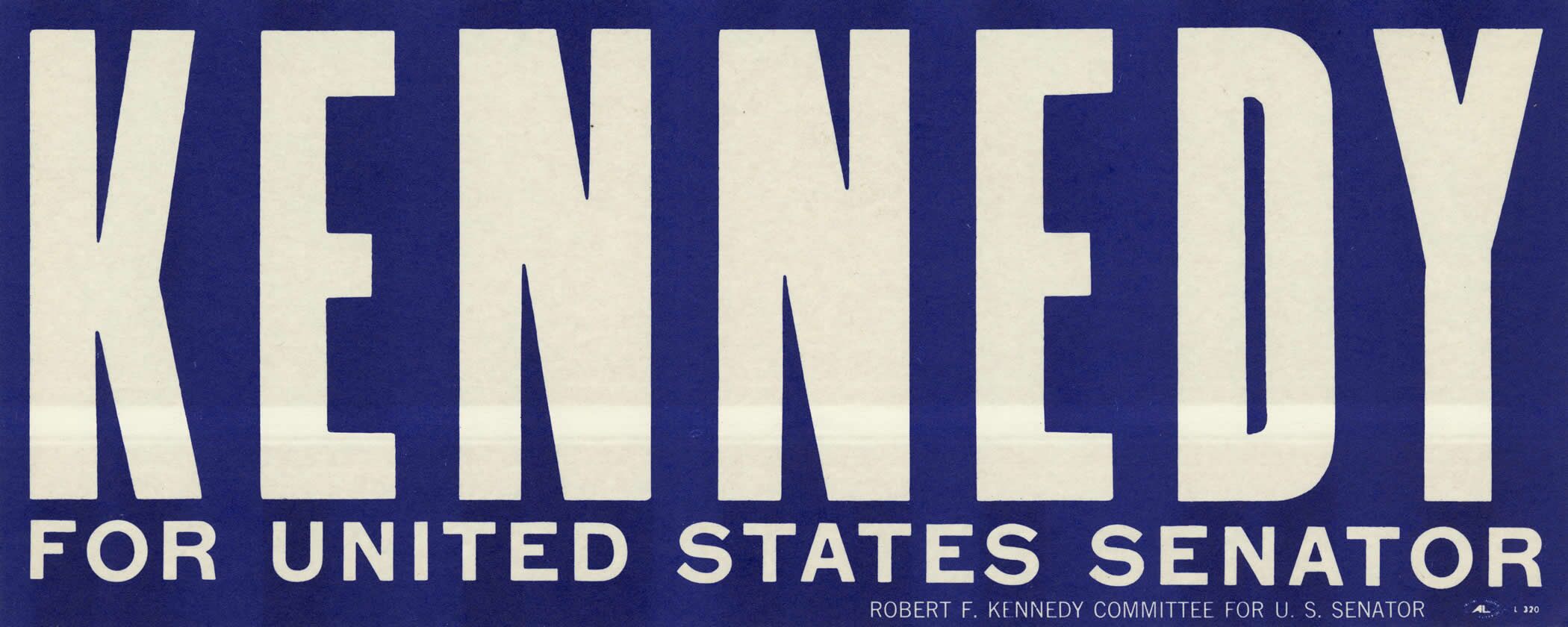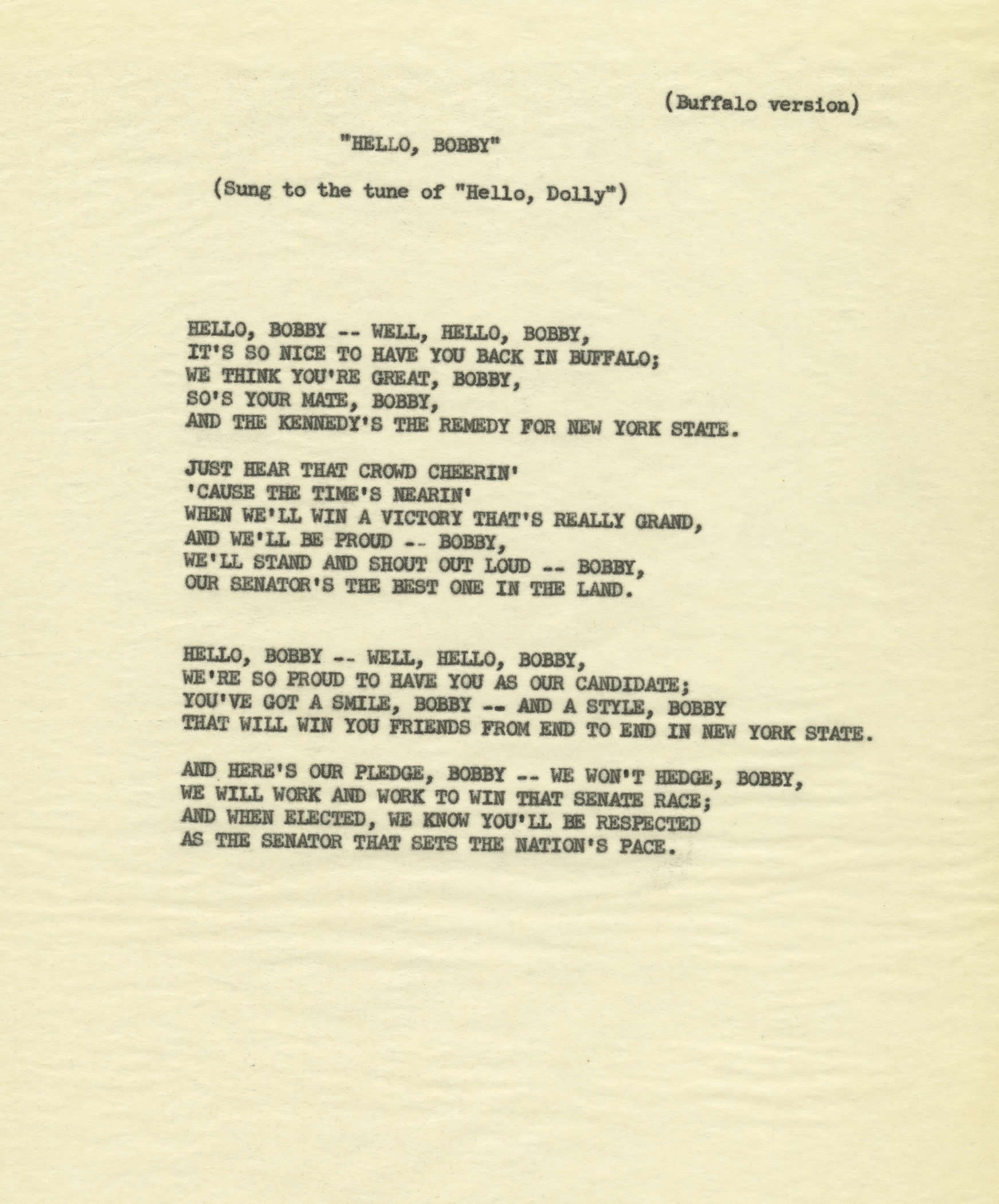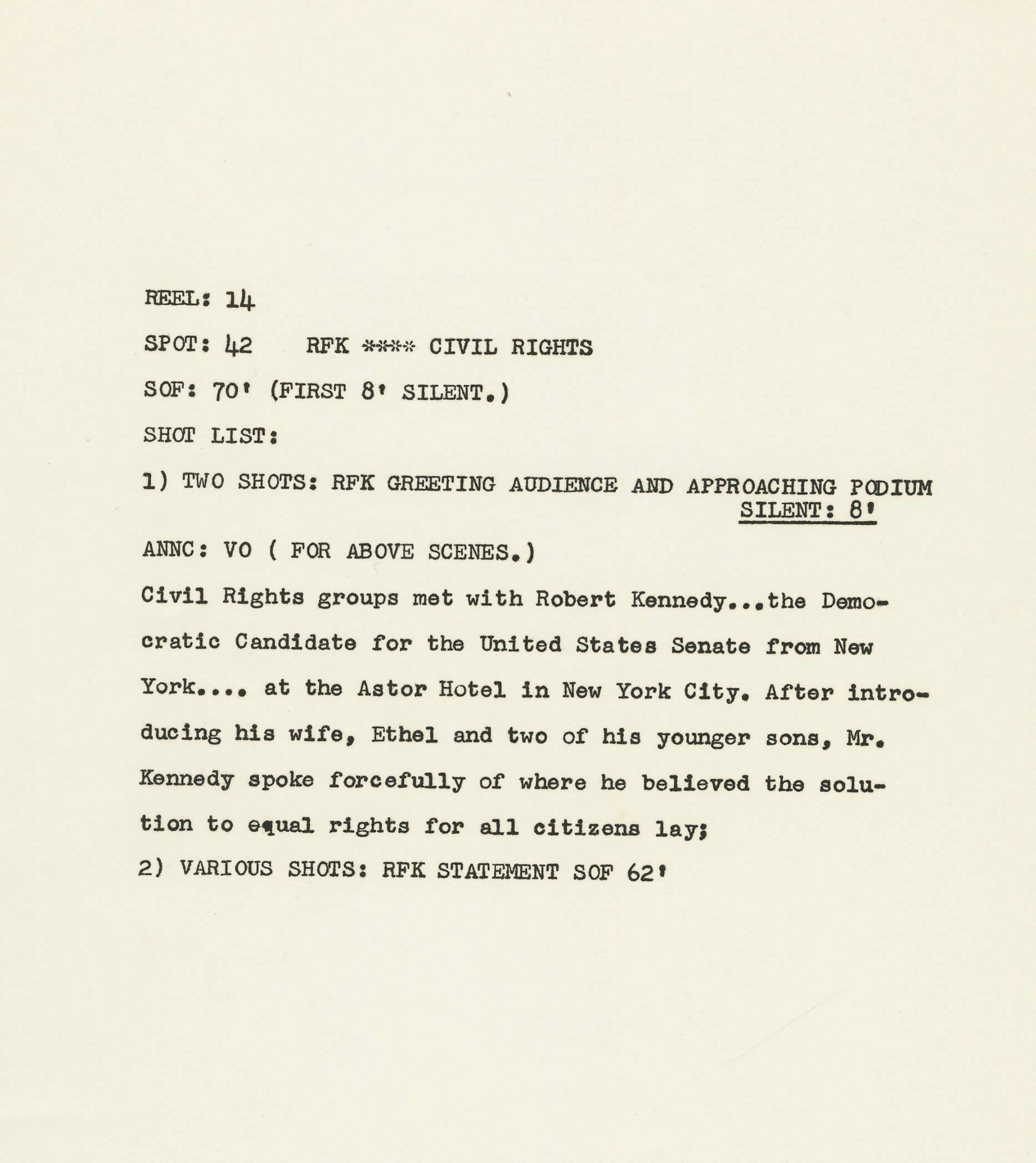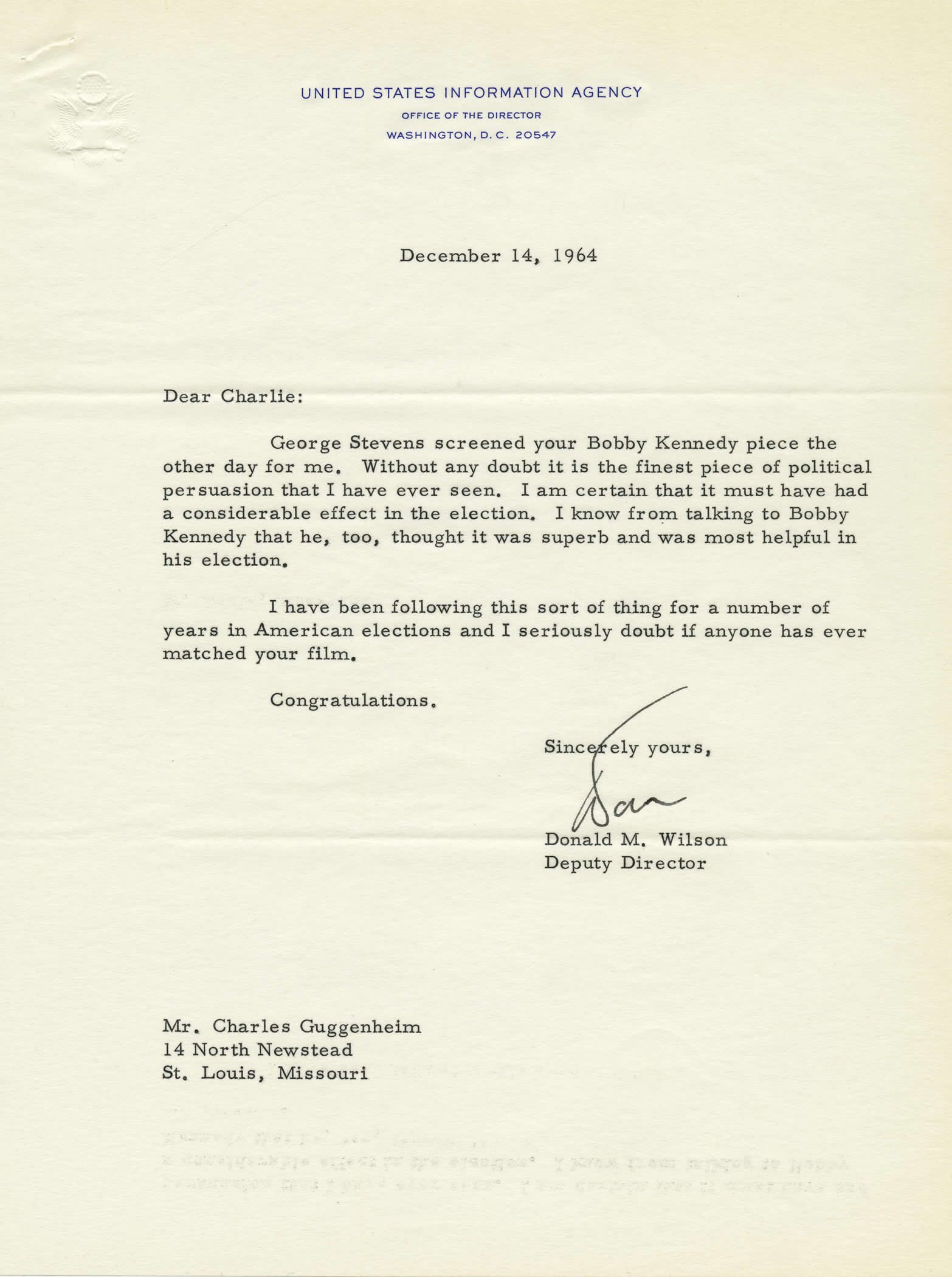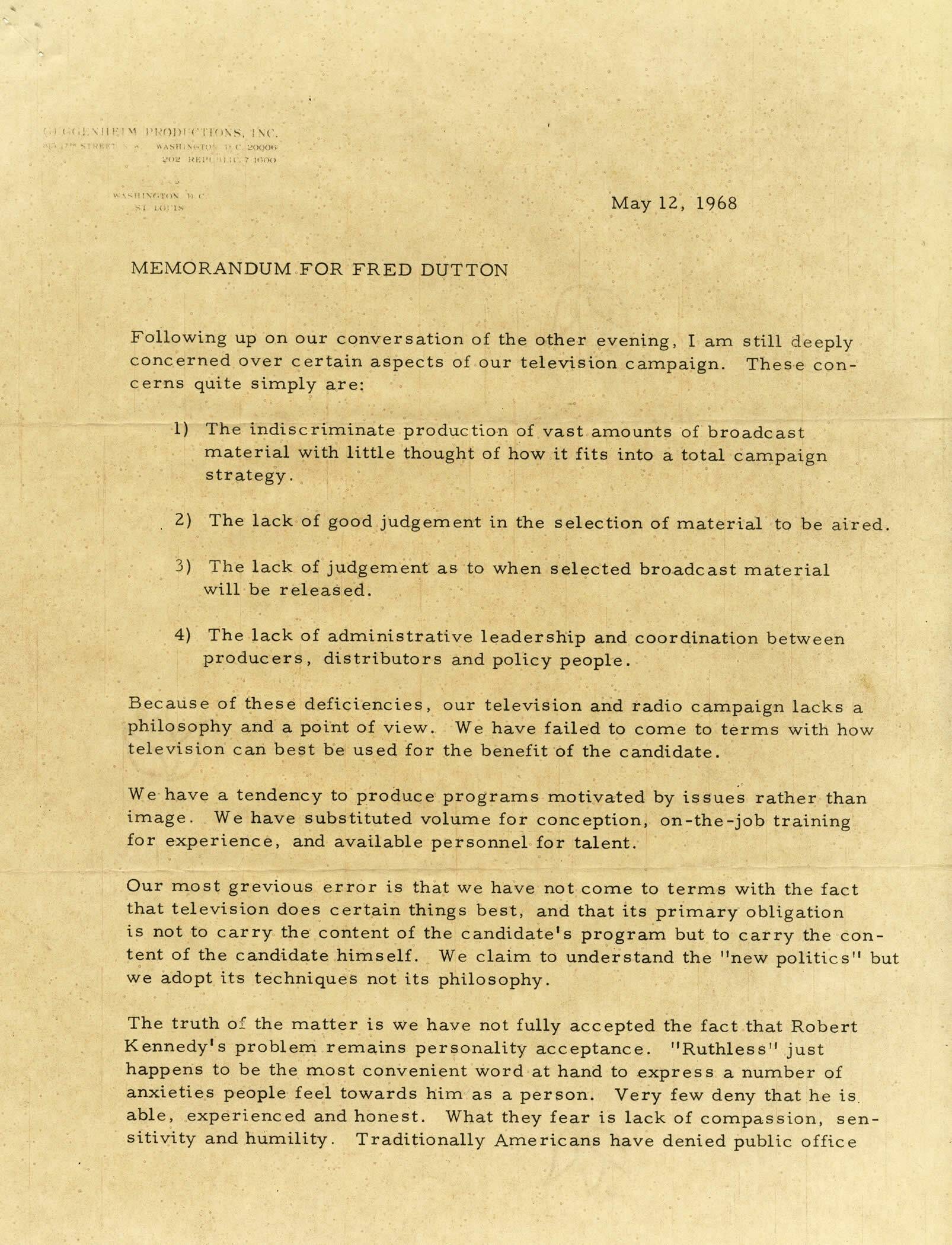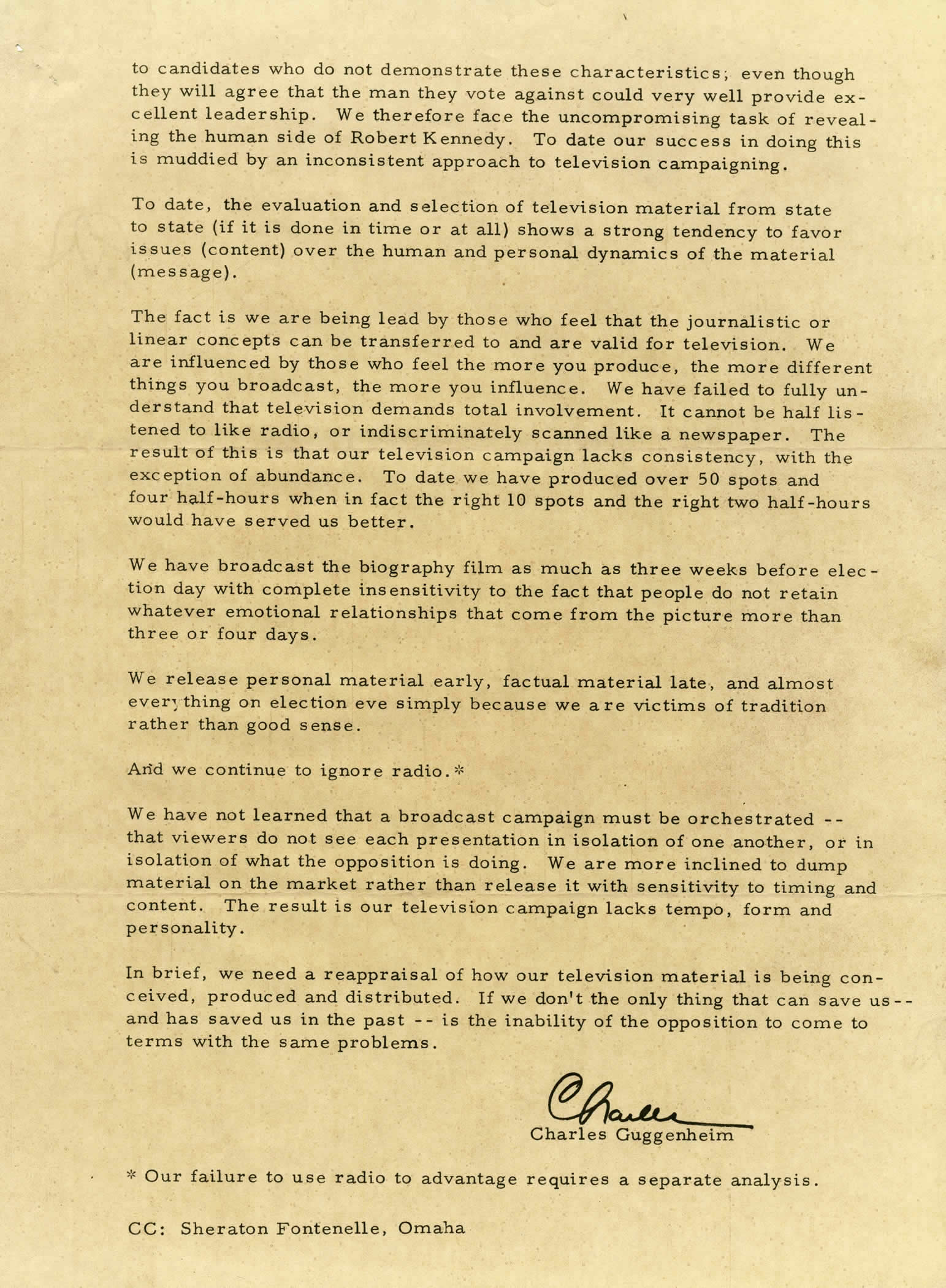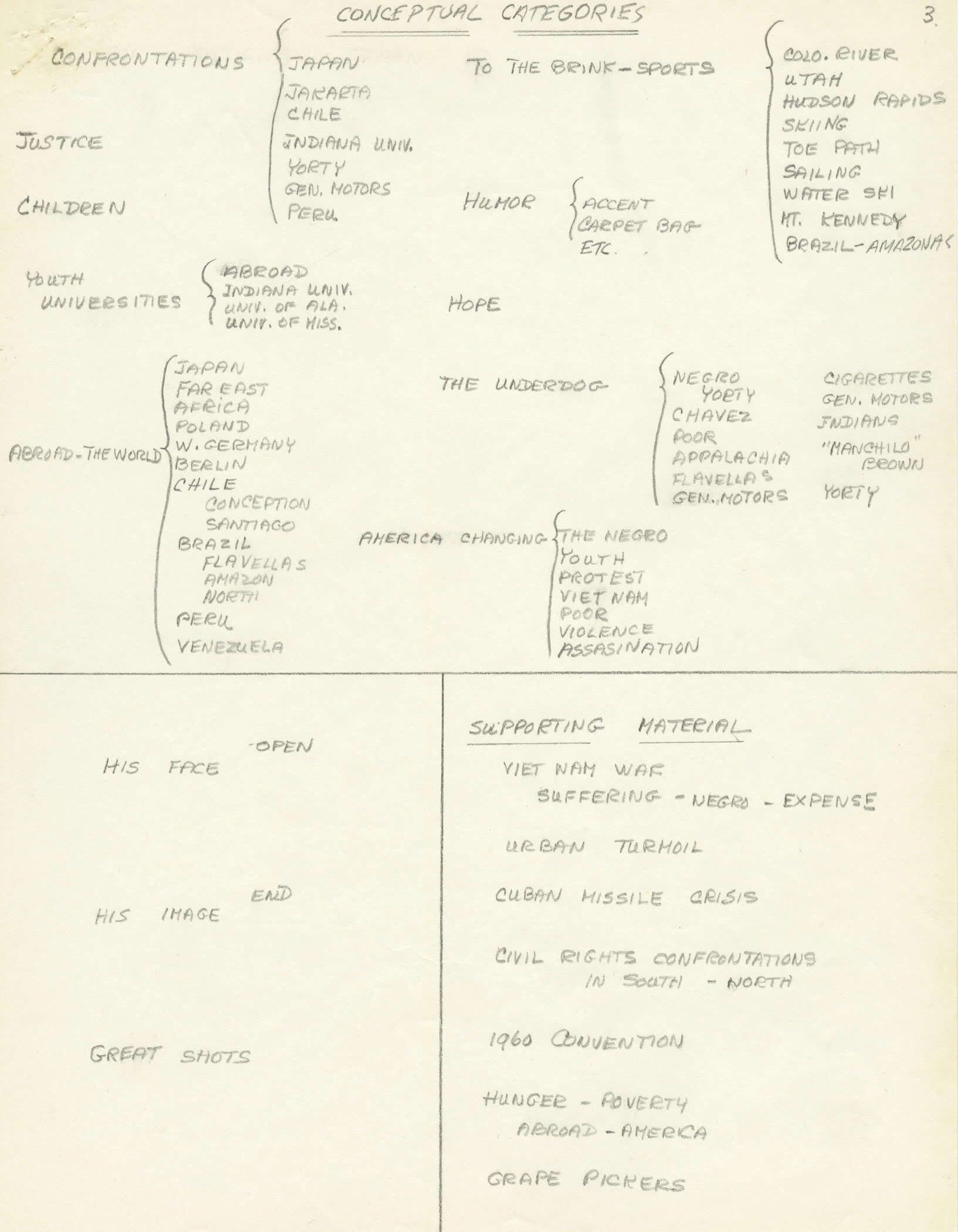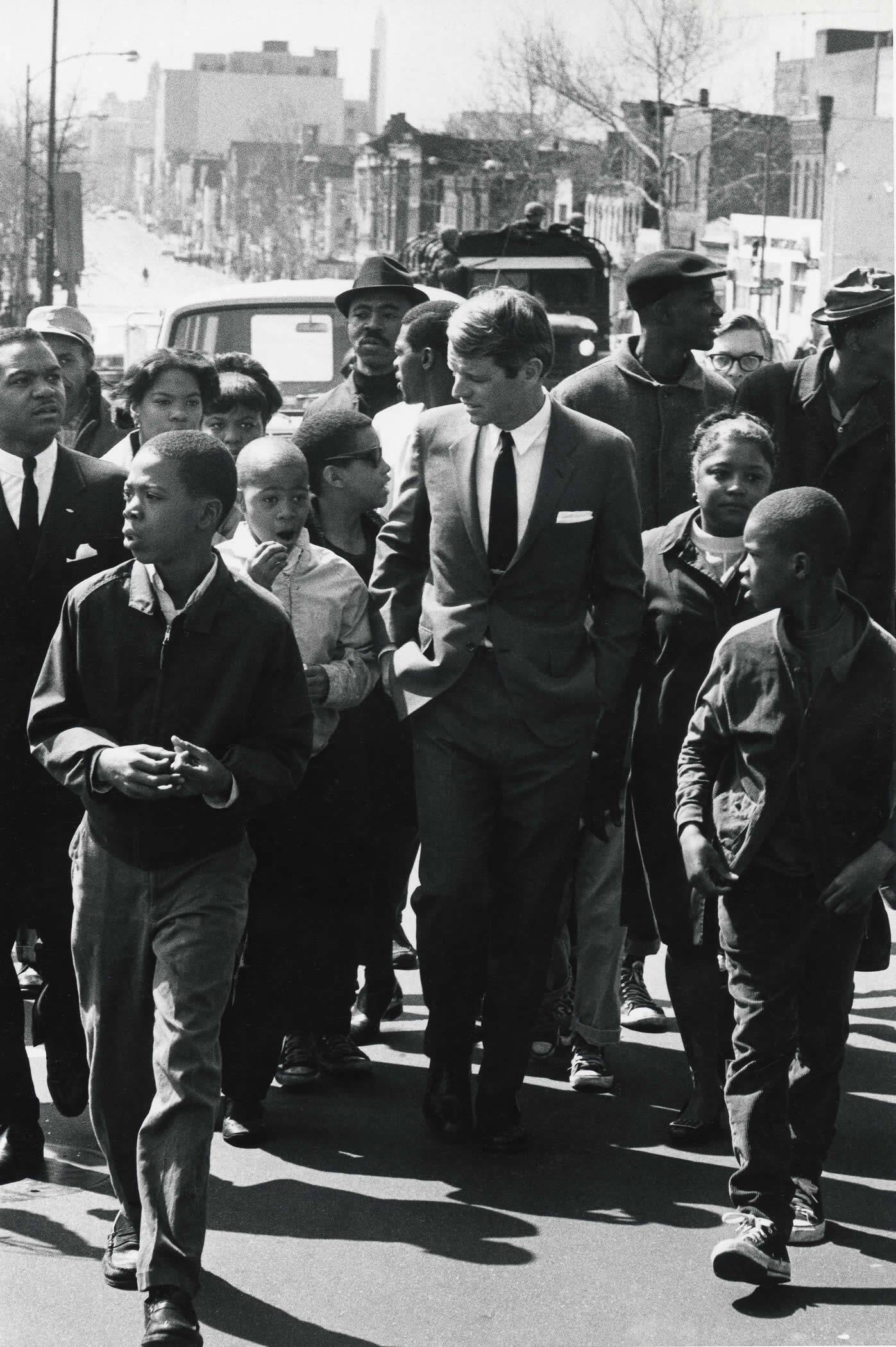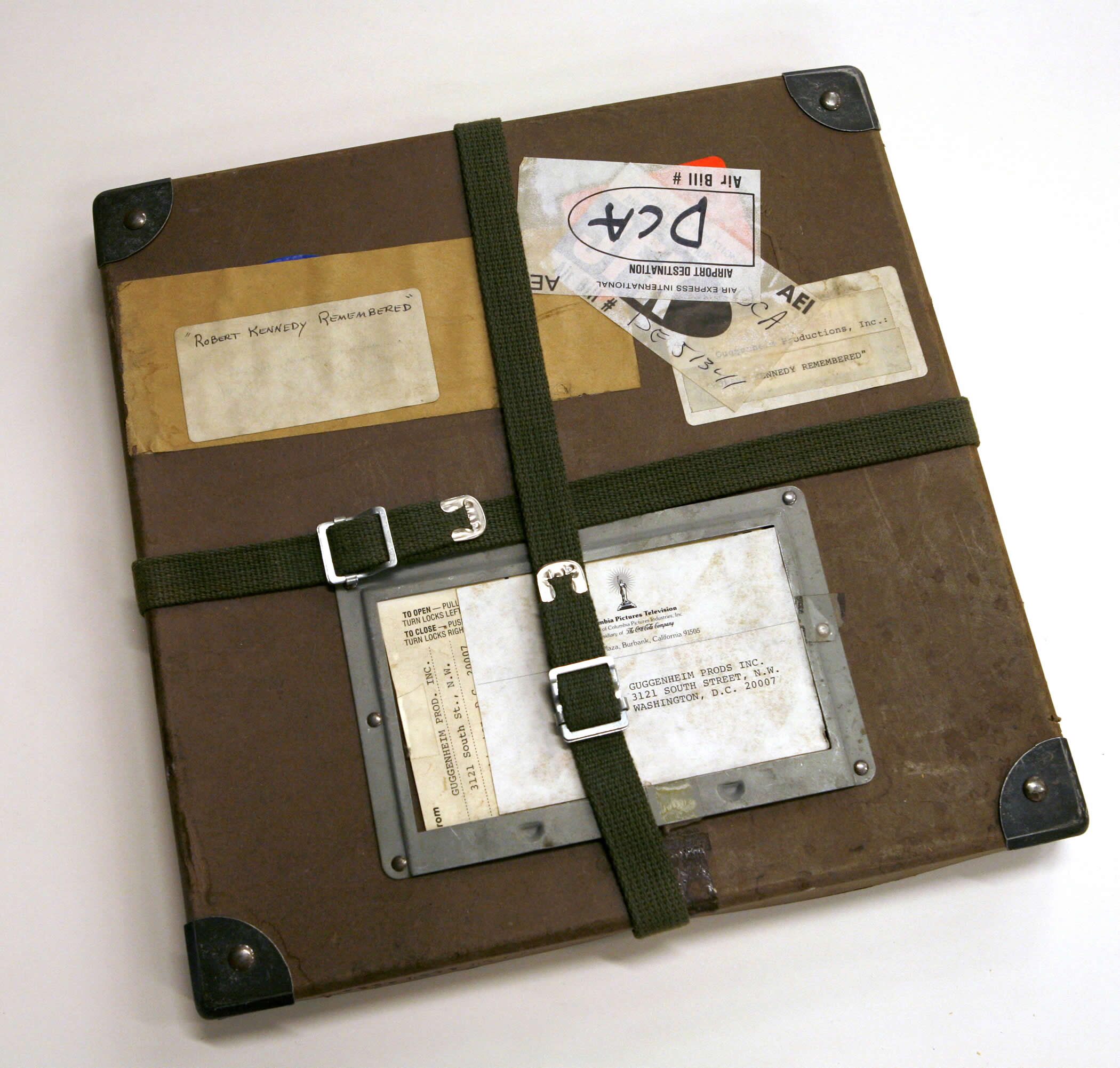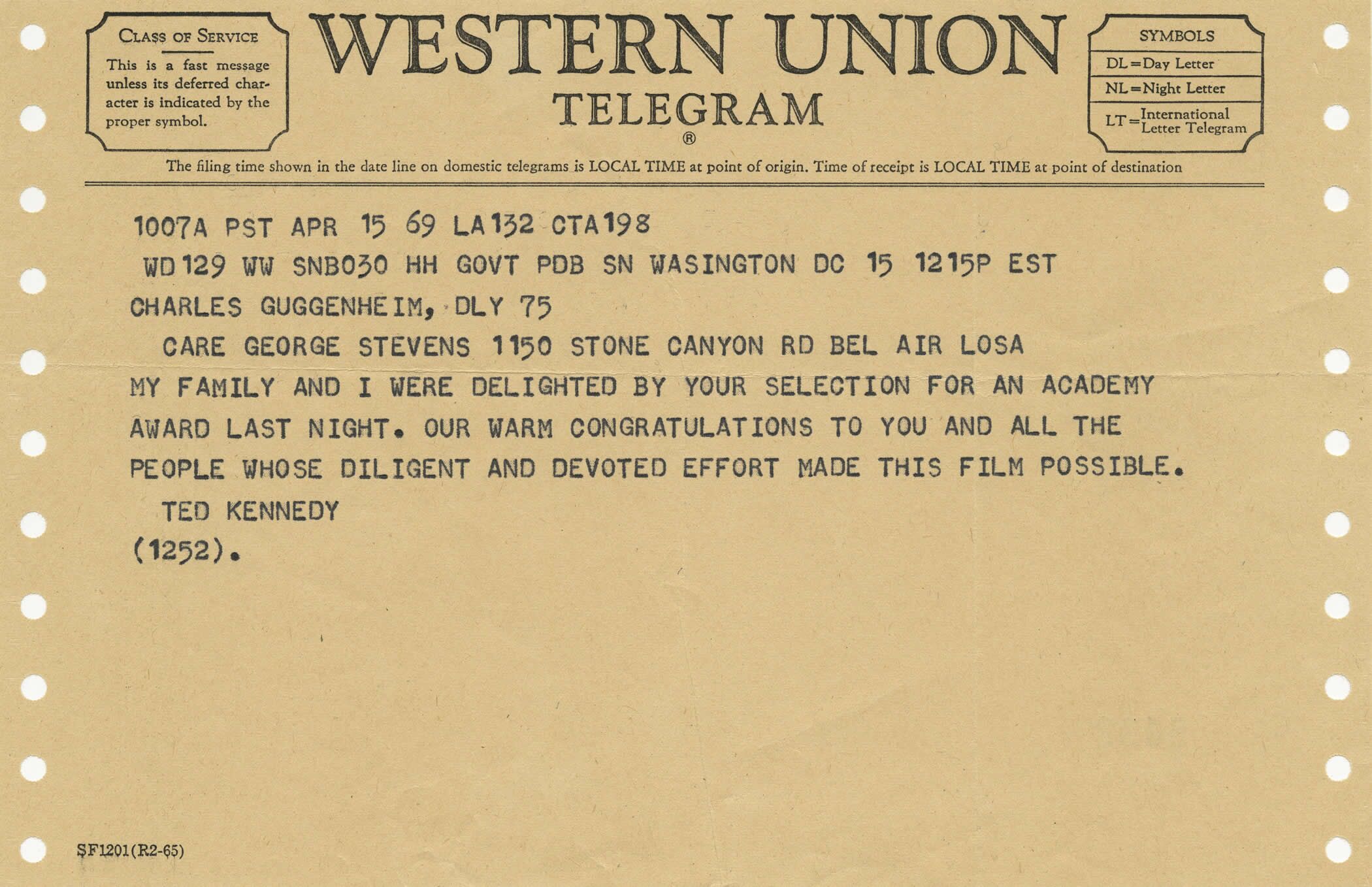Charles Guggenheim (1924-2002) devoted his life to documentary filmmaking. An acclaimed director with a career that spanned five decades and films that garnered 12 Academy Award nominations and four wins, Guggenheim pursued his craft with an intensity and depth that few have matched.
Evident in his work is a compassionate concern for the American experience, a subject Guggenheim explored time and again in films that are critical, celebratory, and oftentimes both. He is the rarest of documentarians: a man who not only captured the events of his time, but helped shape them. Seen above is a photo of Guggeneim during production of The Great St. Louis Bank Robbery, December 1957
The Margaret Herrick Library’s Special Collections is proud to house the Charles Guggenheim papers, currently being processed under the auspices of a two-year grant from the National Historical Publications and Records Commission. This collection documents works for film, television and other media that were directed and produced by Guggenheim Productions between 1954 and 2003. The files encompass more than 400 linear feet and consist largely of scripts, research materials, production materials and correspondence.
Chief among these is his work for Robert F. Kennedy, whose assassination nearly fifty years ago on June 6, 1968, gives us occasion to revisit an essential aspect of Guggenheim’s contributions. In addition to producing and directing numerous documentaries, he was a pioneer of political campaign advertisements for television, including the political documentary.
Guggenheim worked with numerous Democratic candidates, beginning with Adlai Stevenson in the 1950s to Ted Kennedy and his bid for the presidency in 1980. He collaborated regularly with certain politicians over the course of their career, and it was this familiarity that allowed Guggenheim to strategically leverage his knowledge of the candidate to produce effective campaign materials.
Guggenheim began his work with Robert F. Kennedy during his 1964 Senatorial campaign. He produced a biographical film for the candidate as well as a series of television spots relevant to the issues of the day, such as civil rights, education and immigration law.
Guggenheim used documentary filmmaking techniques to produce personal and emotional half-hour candidate biographies, an innovative and disarming approach designed to persuade voters. The film he made about Robert Kennedy for his 1964 campaign received wide acclaim and was believed to have contributed to Kennedy’s electoral victory, as the letter below attests.
When Kennedy belatedly declared his candidacy for president in mid-March 1968, following President Johnson’s weak showing in the New Hampshire primary, his campaign was up and running so quickly that Guggenheim began producing spots without having had time to negotiate budget or payment schedules.
In approximately five weeks, Guggenheim and his staff produced 120 different political spots for television and six half-hour films for Kennedy’s presidential campaign.
He referred to one of his 1968 campaign biographies on RFK as “our trump card.” This was both because Kennedy’s public image needed softening after years pursuing organized crime as Attorney General and because he knew that the opposition would not have anything comparable.
During his political work, Guggenheim would send detailed memos to campaign staff that demonstrated his sophisticated understanding of television’s strengths as a political tool. In a memo to Kennedy’s campaign manager, Fred Dutton, he criticized the handling of prior spots and compellingly argued that the medium’s “primary obligation is not to carry the content of the candidate’s program but to carry the content of the candidate himself.”
The Kennedy campaign came to a shocking end when the senator was assassinated on the eve of his triumphant win in the California primaries. In the wake of Kennedy’s death, Guggenheim was commissioned by his family to produce a memorial film.
Production photograph from Robert Kennedy Remembered, 1968 (Burt Glinn, photographer)
Drawing on the extensive footage and research that he and his staff had already compiled, Guggenheim worked tirelessly to produce a fitting tribute to Robert F. Kennedy in time for it to be shown at the Democratic National Convention on August 29, 1968. The resultant film, Robert Kennedy Remembered, brought the floor of the convention hall to a standstill. The next year, Guggenheim picked up his second Oscar statuette at the 41st Academy Awards; he went on to become the most honored documentary filmmaker in Academy history. In 2004, the Academy Film Archive acquired the vast majority of Guggenheim’s collection, including prints of most of his films, as well as original negatives, outtakes and production materials.
The Academy of Motion Picture Arts and Sciences’ preservation efforts are made possible in part by a grant from the National Historical Publications and Records Commission.


